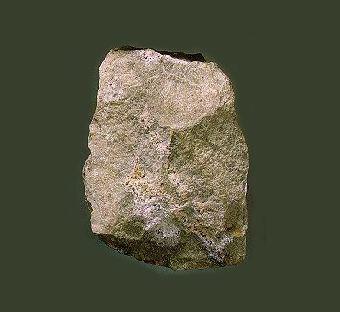Igneous Rocks
The so-called crust
of the Earth is about 35 km thick under the continents but averages only
some 7 km beneath the oceans. It is formed mainly of rocks of relatively
low density. Beneath the crust there is a layer of denser rock called
the mantle which extends down to a depth of nearly 3.000 km. Much of the
molten rock material which goes to make up the igneous rocks is generated
within the upper parts of the mantle.
Magma:
This material migrates upwards into the Earth's crust and forms rock masses
which are known as igneous intrusions. If magma reaches the Earth's surface
and flows out over it, it is called lava. Within some lavas, fragments
of dense, green-coloured rocks are sometimes found which consists principally
of olivine and pyroxene. These fragments are thought to represent pieces
of the mantle, carried upwards by the migrating magma.
The overwhelming majority of lavas consist of the black, rather dense
rock called basalt, and most eptrologists consider that the primary molten
rock material which comes from the mantle has a composition which is near
to that of basalt. Although basalt is the most abundant of the lavas,
granite is by far the commonest of the intrusive igneous rocks.
Granite is mineralogically and chemically different from basalt and for
many years geologists have wrestled with the problem of how the two rock
types are related. If basalt is assumed to derive from the mantle, is
it likely that granite, which is of a quite different composition, could
also come from the mantle? Nowadays it is considered that granite may
be produced in two ways; either from basalt, or from crustal rocks. When
basalt magma starts to crystallize in the upper mantle, or the lower part
of the crust, the overall composition of the crystals is not the same
as the overall composition of the magma. This means that the liquid part
will have a composition different from that of the original magma, and
the further the crystallization process goes the greater will be the difference
in composition between the liquid and the crystals. If the crystals and
the liquid should now be separated by some mechanism, then rocks of two
types will result, and each will have a composition different from the
original basalt. This process, called differentiation, is capable of producing
a great range of rock types, one of which is granite.
The second and perhaps more important way of producing granite is thought
to operate within the crust itself. When mountain chains are formed, considerable
thickness of crustal rocks are squeezed and thickened, and probably the
base of the crust bulges down into the mantle. At the same time large
volumes of magma move up into the crust. The effect is to heat the base
of the crust to temperatures high enough to melt the rocks, so producing
more magma. This new magma, which has the composition of granite, is mobile
and moves up into the higher levels of the crust where it cools and solidifies
as large granite intrusions, which are found in most mountain belts. These
two processes account for the majority of igneous rocks.
The recognition and naming of igneous rocks involves an assessment of
grain size and the recognition and estimation of the relative amounts
of the constituent minerals. Additional information is obtained from colour
index, texture, structure, and sometimes from field relations."
(Hamilton et al 1976, 146-147)
|

